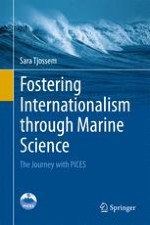
2017 | OriginalPaper | Buchkapitel
1. Introduction
verfasst von : Sara Tjossem
Erschienen in: Fostering Internationalism through Marine Science
Aktivieren Sie unsere intelligente Suche, um passende Fachinhalte oder Patente zu finden.
Wählen Sie Textabschnitte aus um mit Künstlicher Intelligenz passenden Patente zu finden. powered by
Markieren Sie Textabschnitte, um KI-gestützt weitere passende Inhalte zu finden. powered by